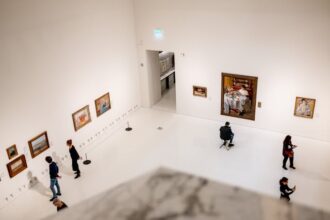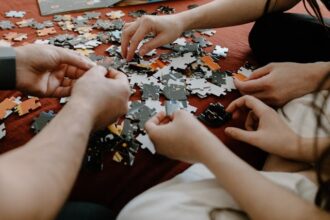A groundbreaking research initiative by Oregon Health & Science University, which actively involves older Black adults in walking and sharing memories within historically Black neighbourhoods of Portland – areas significantly altered by rapid gentrification – has shown promising results in enhancing cognitive function, per recent findings.
Since its inception in 2016, the OHSU programme has garnered significant attention, inspiring similar projects in Seattle and Oakland, California. Recent research, now published in The Gerontologist, suggests potential benefits for brain health in a demographic particularly vulnerable to Alzheimer’s disease. The study documented health and mood improvements among participants and noted cognitive enhancements in individuals exhibiting mild memory issues at the outset, instilling hope for a brighter future.
Raina Croff, Ph.D., an associate professor of neurology at the OHSU School of Medicine and a researcher at the OHSU Layton Aging and Alzheimer’s Disease Research Center, highlighted the significant cognitive improvements observed in participants with memory loss. The intervention, Sharing History through Active Reminiscence and Photo-Imagery (SHARP), leads groups on 72 unique mile-long walks three times weekly for six months, integrating exercise, social interaction, and active reminiscence. This unique combination, facilitated through memory markers displayed on intelligent tablets, encompasses news clips, photos, ads, and historical artefacts, enriching the walking experience.
According to Croff, the consistent practice of walking, reminiscing, and socialising has demonstrated a substantial positive impact on health. The programme’s effectiveness is deeply rooted in the communal aspect of the walks, which sets it apart from individual walking exercises. This aspect, often overlooked, is a critical factor in the program’s sustainability and success, highlighting the importance of human connection and community well-being.
Participants have recounted mixed emotions, mainly when traversing North and Northeast Portland neighbourhoods that have undergone drastic changes due to construction projects and gentrification, displacing long-established families. Despite the painful memories, the shared experience of walking through these changes has fostered communal healing.
The research underscores the mood-enhancing effects of the walks, with participants reporting improved well-being immediately after and at the end of the study. Engaging directly with the community and its rich historical backdrop, the participants connected in ways that counter the isolating trends of modern society, where remote work and digital interaction have diminished neighbourly conversations.
Croff believes the study affirms the importance of maintaining social and cultural connections for individual and community health. She emphasises the inherent human need for face-to-face interaction and a connection to our physical surroundings, suggesting that these elements foster community well-being in an increasingly digital age.
More information: Raina Croff et al, Walking and Social Reminiscence in Gentrifying Neighborhoods: Feasibility and Impact on Cognitive, Physical, and Mental Health Among Older Black Adults in the SHARP Study , The Gerontologist. DOI: 10.1093/geront/gnae019
Journal information: The Gerontologist Provided by Oregon Health & Science University








